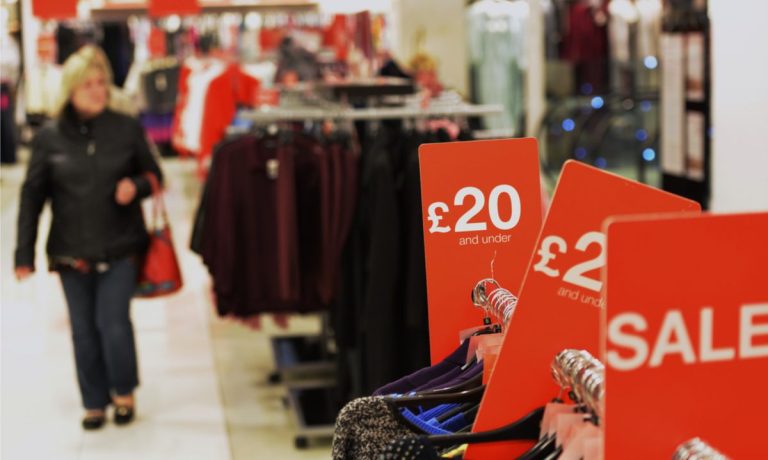
European consumer sentiment is slumping. Although the general state of consumers’ appetite to spend varies from country to country and sector to sector, the overall picture is bleak — and slow or declining retail growth looks likely to continue into 2023.
In the U.K., the GfK Consumer Confidence Index — one of the longest-running and most frequently cited economic metrics for assessing people’s overall financial situation and general feelings about the economy — has been on a near-continuous decline. In September, the index fell to an all-time low of -49, the fifth successive month during which the index hit a new bottom.
Read more: PYMNTS Intelligence: Leveraging BNPL to Beat the Cost-of-Living Crisis
Among other questions, the GfK survey asks: “In view of the general economic situation, do you think now is the right time for people to make major purchases such as furniture or electrical goods?”
Respondents are asked to choose between 1 (now is the right time), 0 (it is neither the right time nor the wrong time), and -1 (now is the wrong time).
The index decline reflects, in part, British consumers’ justifiable hesitancy to make large purchases amid the intensifying cost of living crisis in the country. This is paving the way for alternative payment methods like buy now, pay later (BNPL), which can help retailers limit strains on cash flow and help consumers keep their heads above water.
See also: UK Public Sector Workers Turn to BNPL Amid Real-Terms Wage Cuts
Earlier this year, a PYMNTS survey found that out of 7,024 U.S. adult consumers, 55.6% found BNPL useful, while 25.5% said that they would not have been able to afford a specific purchase without the alternative payment method.
And for consumers who had been denied credit by traditional lenders, 46.1% reported using BNPL because they wouldn’t be able to otherwise afford purchases. A further 47% of consumers said they would be interested in BNPL for expensive, one-time retail purchases.
Get the report: Buy Now, Pay Later: The Financial Self-Care Revolution
As discussed in the latest PYMNTS BNPL Tracker, when merchants embrace BNPL payment options, their overall sales tend to be higher than they were expecting. The report noted that while only 9% of merchants expected offering BNPL to increase their online sales conversion rate, 30% observed more conversions upon introducing the option.
However, the merchant benefits of BNPL are not limited to eCommerce.
Learn more: Beating Inflation with BNPL: How Merchants and Consumers are Navigating the Cost of Living Crisis
In an interview with PYMNTS for the August BNPL tracker, Erik Svensen, head of global consumer finance for dental supply company Dentsply Sirona, said that dividing large payments into more manageable fractions helps consumers fit all kinds of purchases into their budgets — even dentistry.
“With BNPL, they’re able to pay over time. Should they make that full monthly payment, they’ll incur no interest. That appeals both to a financial sense as well as a cash flow sense, and they don’t incur any additional charges so long as they’re paying that monthly piece,” he said, adding that the model is “really appealing to customers.”
With the U.K.’s inflation hovering at around 10%, and October’s consumer confidence index likely to take a further hit from the recent devaluation of the pound, improved cash flow and the ability to spread the cost of purchases have even more appeal.
Related: 5 Inflationary Trends to Watch As Q4 Gets Underway
And as many in the country struggle to make ends meet amid rising costs and real-terms wage cuts, responsible BNPL lending is one of the financial services that can help keep the U.K. economy ticking until better times come around.
For all PYMNTS EMEA coverage, subscribe to the daily EMEA Newsletter.